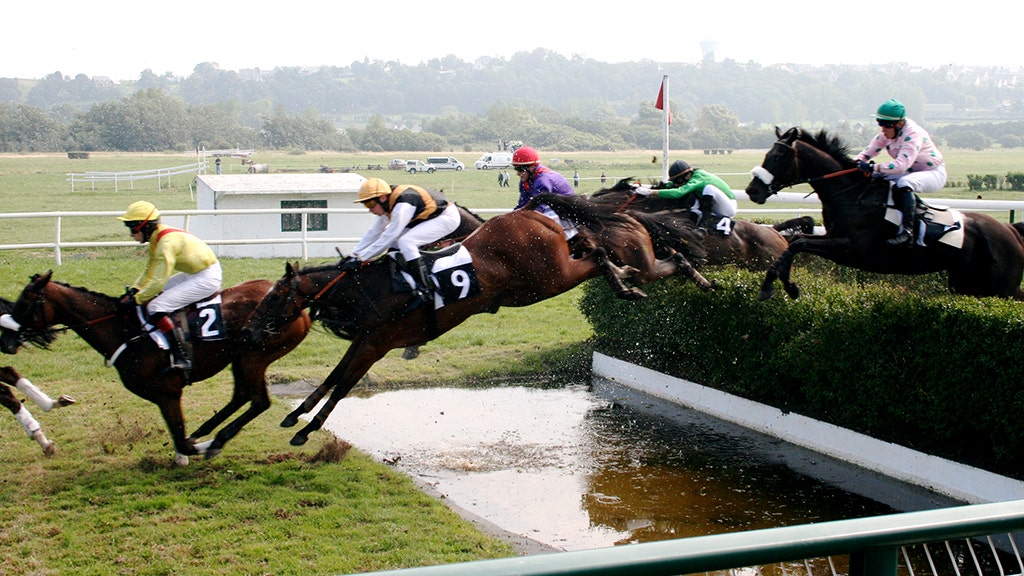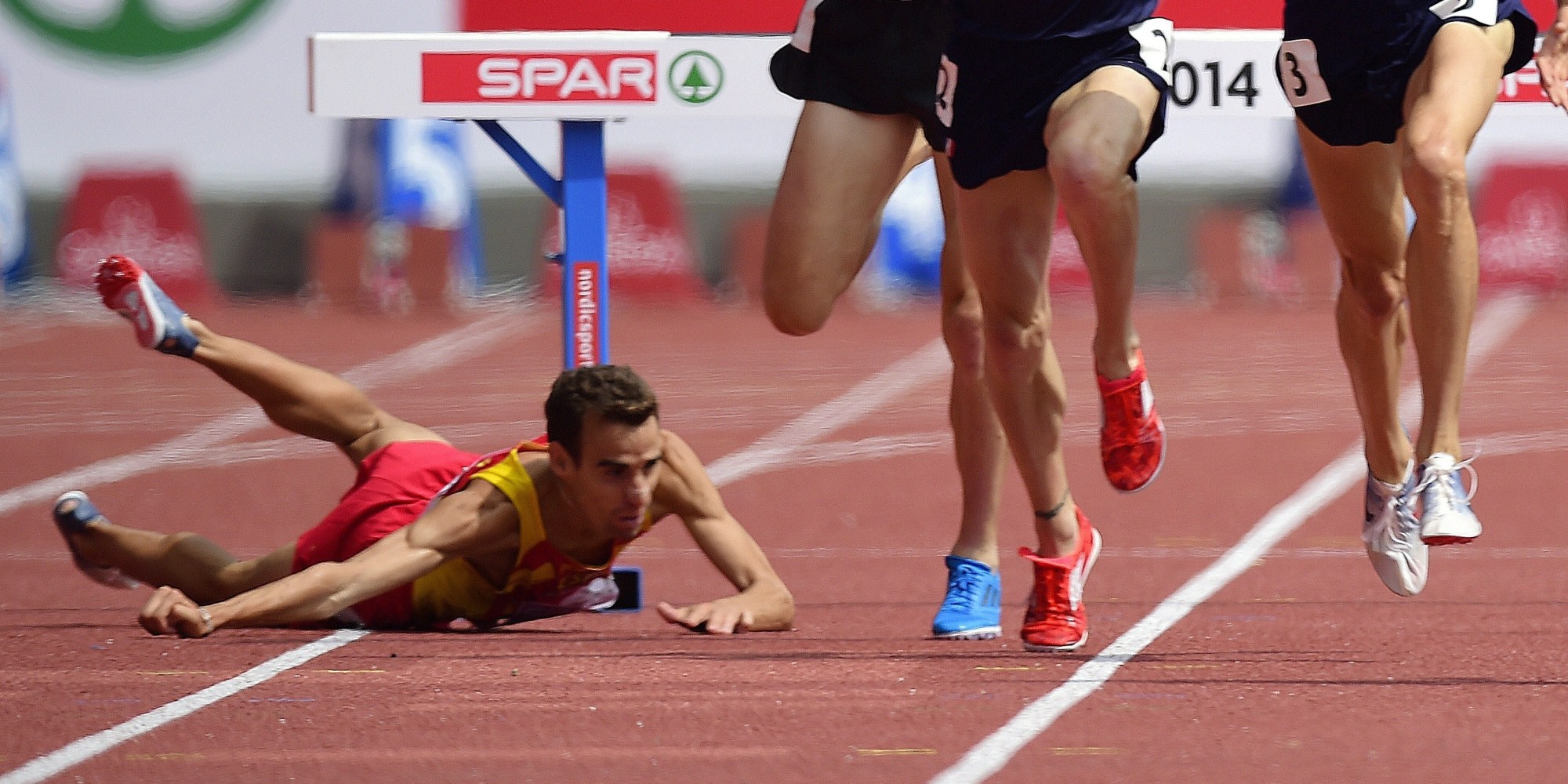The Mechanics of a Steeplechase Fall

Steeplechase racing, with its challenging combination of speed, endurance, and obstacles, is inherently risky. Falls are a common occurrence, often resulting from a complex interplay of factors, including rider error, horse behavior, and the nature of the obstacles themselves.
Obstacles in Steeplechase Racing, Steeplechase fall
Obstacles pose a significant challenge in steeplechase racing, contributing to the risk of falls. The unique design and placement of these obstacles require horses and riders to navigate them with precision and skill.
- Water Jumps: These obstacles are often the most challenging, as horses must jump into and out of water, which can disrupt their balance and footing. The water’s depth and the surface of the landing area can also affect the horse’s stability.
- Fences: Steeplechase fences are typically higher and more substantial than those found in flat racing, demanding greater athleticism and jumping ability from the horse. The construction of the fence, including its height, width, and material, can influence the difficulty of the jump.
- Open Ditches: These obstacles require horses to jump over a ditch before landing on the other side. The depth and width of the ditch, along with the landing surface, can contribute to the risk of falls.
Types of Falls in Steeplechase Racing
Falls in steeplechase racing can occur in various ways, with some stemming from rider error and others from the challenges posed by obstacles.
- Obstacle-Related Falls: These falls often occur when a horse misjudges a jump, loses its balance, or is unable to clear the obstacle completely. For example, a horse might stumble upon landing, fail to clear a fence, or land awkwardly in a water jump.
- Rider Error: Rider error can also lead to falls. This might involve misjudging the pace of the race, failing to control the horse effectively, or making a mistake in navigating the obstacles. For instance, a rider might misjudge the distance to a jump, leading to a mistimed approach or a miscalculated jump.
- Horse Behavior: A horse’s behavior can also contribute to falls. If a horse becomes spooked, refuses to jump, or loses its focus, it can increase the risk of a fall. For example, a horse might be startled by a sudden noise or react negatively to the presence of other horses, leading to a loss of control and a potential fall.
The Impact of a Steeplechase Fall on the Horse and Rider

A steeplechase fall can have serious consequences for both the horse and rider, resulting in a range of injuries that can be life-altering. The unique nature of steeplechase racing, with its jumps and challenging terrain, increases the risk of falls compared to other equestrian disciplines.
Injuries to the Horse
The impact of a fall can cause significant injuries to the horse, including:
- Fractures: The most severe injuries are fractures, which can occur in the legs, spine, or ribs. These fractures can be difficult to treat and may require surgery, long-term rehabilitation, or even euthanasia.
- Soft Tissue Injuries: These include muscle strains, ligament tears, and tendon damage. While less severe than fractures, soft tissue injuries can still be debilitating and require significant time to heal.
- Concussions: Horses can also suffer concussions from the impact of a fall. Concussions can cause neurological problems and may require time off from racing to recover.
- Internal Injuries: Falls can cause internal injuries such as organ damage, bleeding, and lacerations. These injuries are often difficult to diagnose and can be life-threatening.
Injuries to the Rider
Riders are also at risk of serious injuries in a steeplechase fall. These injuries can include:
- Head Injuries: Riders can suffer concussions, skull fractures, and other brain injuries from the impact of a fall. These injuries can be life-threatening and may result in long-term disability.
- Spinal Injuries: Falls can also cause spinal injuries, including fractures and dislocations. These injuries can result in paralysis or other neurological impairments.
- Bone Fractures: Riders can sustain fractures in their arms, legs, ribs, and other bones. These fractures may require surgery and long-term rehabilitation.
- Soft Tissue Injuries: These include muscle strains, ligament tears, and tendon damage.
Statistics on Injuries in Steeplechase Racing
While statistics on steeplechase injuries are not as readily available as those for other equestrian disciplines, a 2010 study in the Journal of Equine Veterinary Science found that steeplechase racing has a higher rate of falls and injuries compared to flat racing.
The study reported that:
“Steeplechase racing had a significantly higher rate of falls per race than flat racing (p < 0.001), with 1.7 falls per race in steeplechase compared to 0.2 falls per race in flat racing."
The study also found that the severity of injuries in steeplechase racing was similar to that in flat racing. However, it’s important to note that these statistics are limited and may not reflect the full extent of injuries in steeplechase racing.
The sudden jolt of a steeplechase fall, the earth rushing up to meet you, can leave you breathless and shaken. After a race, nothing feels better than sinking into the plush comfort of a maude tufted leather club chair , letting the rich leather envelop you and soothe your weary muscles.
It’s a moment of quiet reflection, a chance to let the adrenaline fade and appreciate the thrill, and the risks, of the steeplechase.
The sight of a steeplechase fall is always jarring, a sudden, brutal interruption to the graceful rhythm of the race. It’s a reminder of the inherent danger in this sport, a danger that filmmaker Kenneth Rooks, whose work often captured the raw energy of equestrian events, understood deeply.
His lens brought us close to the heart of the action, making us feel the thrill and the terror of each jump, each fall, each moment of triumph. The aftermath of a steeplechase fall, however, is a stark reminder of the fragility of life, the thin line between victory and defeat.